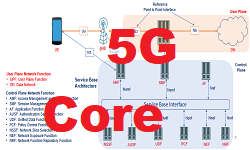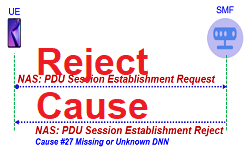5GC UDM – Unified Data Management
What is an UDM ?
UDM is Unified Data Management (UDM) Network Function (NF) related to 5G Core (5GC) Network. In 5G Core Network the functionality of authentication is shared between AUSF and UDM, which is done by HSS in 4G LTE.
UDM sometime also referred as UDF (Unified Data Function) acts as a front-end to store subscription data for the user in the Unified Data Repository (UDR) and executes essential functions on request from other Network Functions (NFs). UDM is paired with UDR, which stores the subscriber profile information, policy, structured and application data.
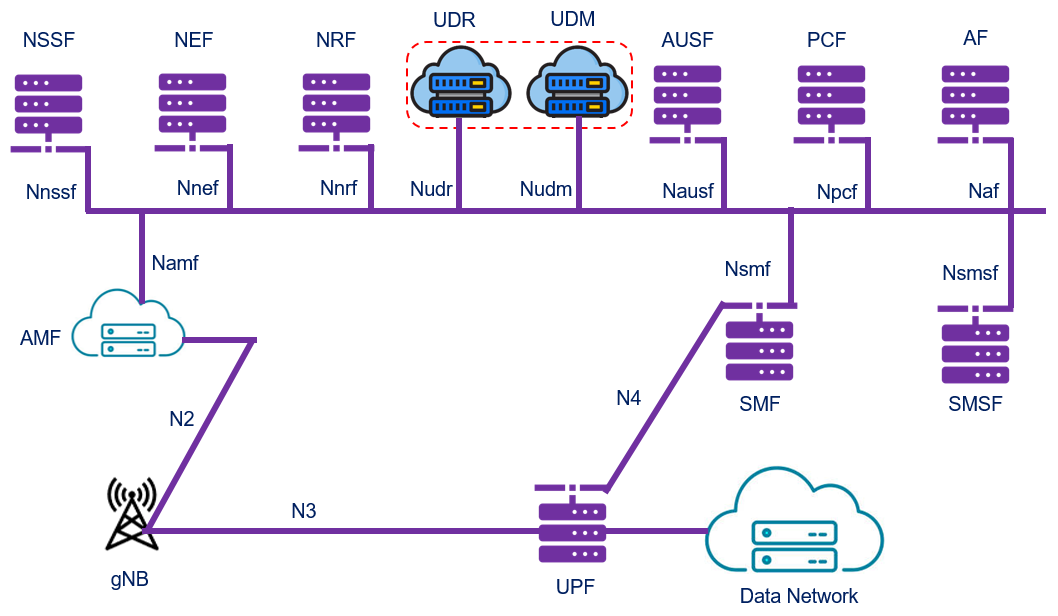
UDM offers services to the Access & Mobility Management Function (AMF), Session Management Function (SMF), Short Message Service Function (SMSF), Authentication Server Function (AUSF), etc. via the Nudm service based interface.
UDM Functionality
- 3GPP specification TS 23.501 describes the UDM functionality
- AMF and SMF use UDM to retrieve the UE’s subscription data, like HLR in 3G and HSS in 4G
- UDM helps in generation of 3GPP AKA Authentication Credentials
- AUSF retrieves information from the UDM to authenticate and informs the UDM about successful or unsuccessful authentications
- Application Functions (AFs) use UDM to subscribe or unsubscribe to data change notifications
- The SMSF checks subscription data by interacting with the UDM. It forwards SMS messages between the AMF and the SMS external networks
- UDM manage storage and management of SUPI for each subscriber in the 5G system
- UDM Support of de-concealment of privacy-protected subscription identifier (SUCI)
- It enables access authorization based on subscription data (e.g. roaming restrictions)
- UE’s Serving NF Registration Management (e.g. storing serving AMF for UE, storing serving SMF for UE’s PDU Session)
- Support to service/session continuity e.g. by keeping SMF/DNN assignment of ongoing sessions.
- MT-SMS delivery support
- Lawful Intercept Functionality especially in outbound roaming case where UDM is the only point of contact for LI
UDM Operation in 5GC
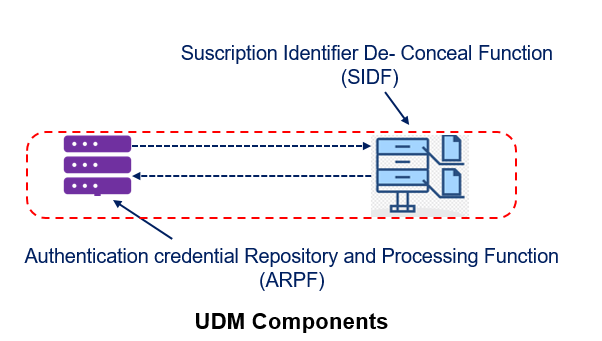
- UDM NF comprises two logical entities
- Authentication credential Repository and Processing Function (ARPF)
- ARPF contains the subscriber’s credentials
- Subscription Identifier De-concealing Function (SIDF)
- SIDF is responsible for resolving the Subscriber Permanent Identifier (SUPI) from the Subscription Concealed Identifier (SUCI)
- Authentication credential Repository and Processing Function (ARPF)
- The UDM shall invoke SIDF if a SUCI is received
- SIDF shall de-conceal SUCI to gain SUPI before UDM can proceed with the request.
- Based on SUPI, the UDM or ARPF shall choose the authentication method, i.e. 5G-AKA, EAP-AKA’, or EAP-TLS
- UDM can assume the role of both stateful and stateless.
- If the UDM stores data locally it is running in a stateful role.
- In a stateless role the UDM keeps user data separately in UDR and uses Nudr services to retrieve required data for processing. This way, database access is kept separate from the operation of the network, improving stability and flexibility.
- The UDM, a central repository of information, is critical for subscriber data and other network functions in 5GC.
UDM Deployment Options in 5G
The UDM provides operators with convergent data management for multi RAT system e.g. 2G/3G/4G/5G networks. The UDM processes subscriber data efficiently, and simplifies networks. It needs to be compatible with existing services and also expand into new 5G services, maximizing operators’ ROI and ensuring service continuity during network upgrade/migration.
The UDM allows existing networks to smoothly evolve to 5G. Cloud-based UDMs can be added to form a hybrid network with existing ATCA-based HSSs. On this hybrid network, subscriber data is smoothly migrated from the HSSs to the UDMs, while ensuring data completeness.
There can be following three evolution path for the deployment of UDM.
- Hybrid network
UDMs are added to form a hybrid network with existing HSSs to maximize operators’ ROI. Operators can plan 2G/3G/4G to 5G upgrades, since the system can automatically migrate new 5G subscribers or batch migrate existing ones by subscriber number segment. Same is being shown in following picture.
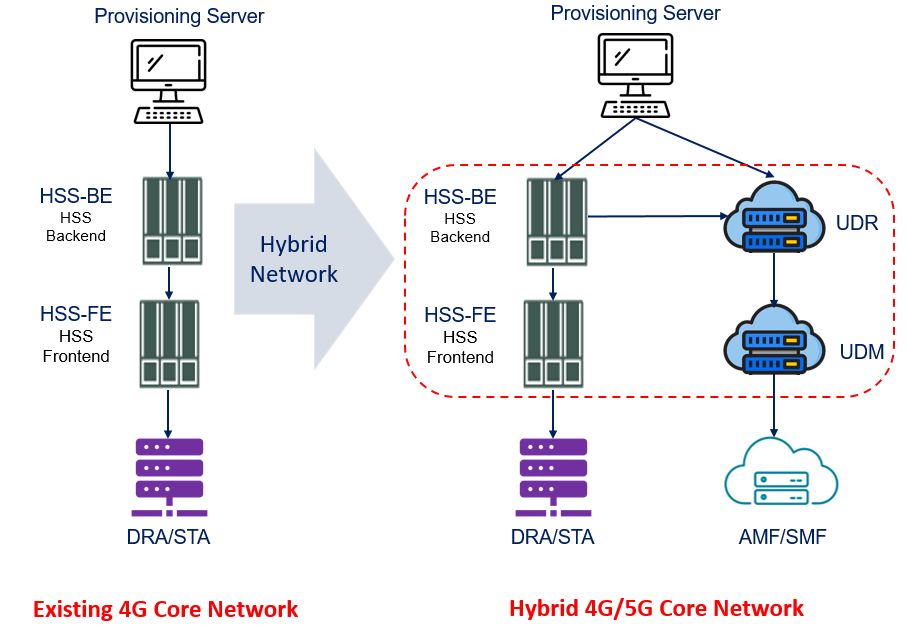
- UDM Translation Agent
A UDM translation agent (UTA) is ideal suite for early-stage 5GC. It improves user experience and quickly promotes 5G services while maintaining stable 2G/3G/4G services. Newly deployed UTAs are compatible with the third-party HLR/HSS to provide 5G services without migrating subscriber data or changing subscribers’ SIM/USIM cards or MSISDNs. In addition, they do not affect 4G services on existing devices and maintain a highly reliable network.
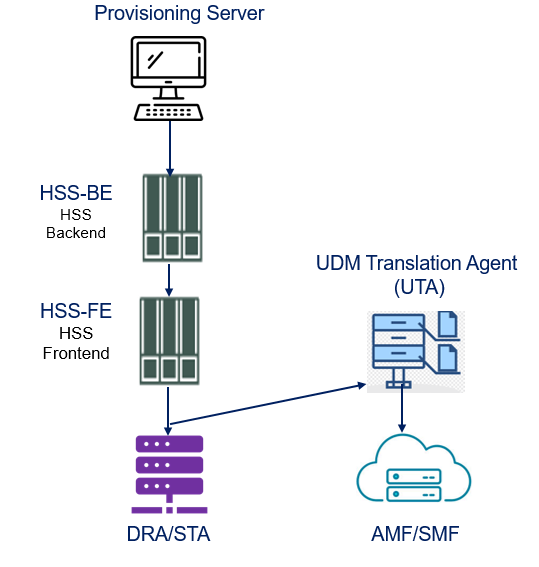
- Full Migration of UDM
UDMs are deployed, and subscriber data in existing Huawei or non-Huawei HSSs are batch migrated to the UDMs. The UDMs provide 2G/3G/4G/5G services for subscribers. This solution allows all subscriber data from previous generations to be simultaneously migrated to the 5G network. However, it affects the existing network services, and requires massive upfront investment.
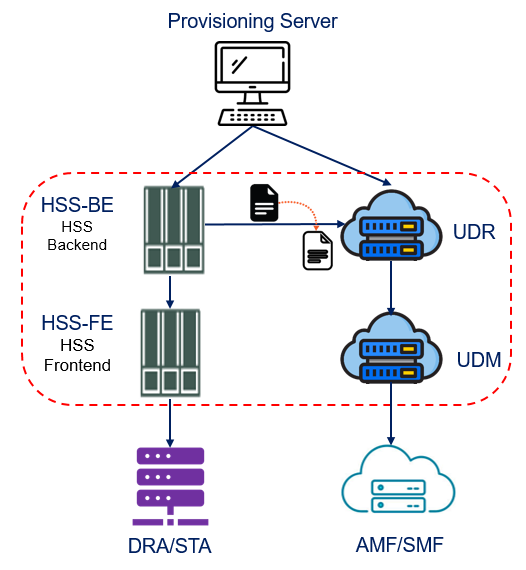
Reference:
- 3GPP TS 23.501 System architecture for the 5G System (5GS)
- 5G Reference Network Architecture
- 5G Network Sharing: Concept, Benefits and Architectures
- Hybrid Core Network – 4G Core to 5 G Core Interconnection
- Deployments Scenarios for 5G-NR
Related Articles:


